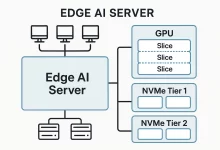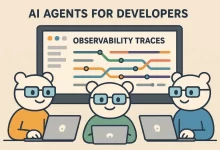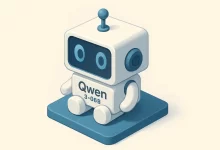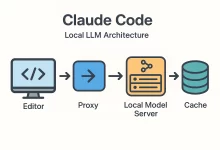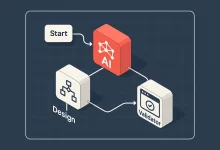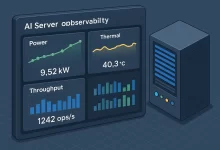Look, I’m not gonna lie—when I first heard that an AI could control Blender with a single prompt, I thought someone was pulling my leg. But then I saw it in action. My jaw dropped. Those “Model Context Protocol” (MCP) servers? They’re the unsung heroes letting AI talk to every software you can imagine. And today? I’m diving deep.

Why MCP Servers Matter
MCP servers are kinda like the universal translators for AI. Want your model to fire off tweets? Done. Need it to whip up slides in PowerPoint? Easy. Heck, it can even manage your Excel spreadsheets. All with a prompt. No manual clicks. No endless API hoops. Just natural language and instant results.
On a personal note, I remember pulling an all-nighter last month, juggling data analysis in Jupyter and slides in PowerPoint. It was chaos—until I plugged in Jupyter-MCP and PowerPoint-MCP. Suddenly, it felt like I had an extra pair of hands. Seriously, I still get goosebumps thinking about it.
My Top Picks for MCP Servers
I’ve tinkered with dozens, but here are the ones I keep coming back to:
1. Productivity Powerhouses
- GMail-MCP: Automate email drafting, summaries, even sends. I used it to clear out my inbox before vacation—saved me hours.
- Notion-MCP: Create pages, manage tasks, reorganize databases. My to-do list has never looked so tidy.
- PowerPoint-MCP: One prompt and you’ve got a slick deck. I once generated a 20-slide pitch in under a minute. True story.
- Excel-MCP: Complex formulas? Data cleaning? Child’s play. It’s like having a spreadsheet ninja on standby.
2. Developer Favorites
- Jupyter-MCP: Code generation, markdown docs, data viz. I literally asked it, “Plot my sales trends,” and boom—chart done.
- GitHub-MCP: Repo management, PR summaries, issue triage. I used it to draft commit messages—saved me from writer’s block.
- Docker-MCP: Spin up containers, manage images. Perfect for testing microservices without memorizing every CLI flag.
- SQLite-MCP: Query databases, inspect tables. It’s my go-to when I need quick data lookups.
- PyCharm-MCP: Control the IDE, run tests, refactor code. Feels like coding with a pair programmer who never sleeps.
3. Design & Creative Tools
- Blender-MCP: 3D modeling on autopilot. I literally had it draft a room layout while I grabbed coffee. Magic!
- Figma-MCP: UI tweaks, asset exports, style guide updates. My design handoff game is next-level now.
- PowerPoint-MCP: (Yep, again) Great for templated visuals—especially when paired with Blender drafts.
4. Communication Champions
- Discord-MCP: Auto-create channels, post updates, react with emojis. My community is buzzing 24/7.
- Slack-MCP: Schedule messages, summarize threads. My team loves the daily AI-driven standup notes.
- WhatsApp-MCP: Text friends, load chat logs, even send media. Took me a hot minute to set up, but wow—it’s worth it.
5. Automation & Web Wizards
- Zapier-MCP: The Swiss Army knife. Connect nearly any web app. I’ve got it logging tweets, updating CRMs, you name it.
- Puppeteer-MCP: Browser automation, scraping, form-fills. I once used it to auto-checkout a limited-edition release. Shh, don’t tell.
- Playwright-MCP: Similar vibe, great for cross-browser tests. My QA workflow’s never been smoother.
6. Specialized Game-Changers
- YouTube-MCP: Video stats, trending topics, metadata tweaks. I used it to identify an untapped niche for my channel.
- ElevenLabs-MCP: Text-to-speech for any LLM. I’ve been generating quick podcast snippets—people think I’ve hired a voice actor.
- Google Calendar-MCP: AI-driven scheduling. No more back-and-forth emails—just tell it, “Find me a slot,” and done.
How to Get Started
So, you’re sold on the idea. But where do you begin? Here’s my rough playbook:
- Pick Your Platform: Decide which MCP server aligns with your daily grind. If you’re a dev, Jupyter- or Docker-MCP. If you live in documents, GMail- or Excel-MCP.
- Grab Credentials: Most require tokens or API keys. For GitHub-MCP, generate a private access token. For Google Calendar-MCP, set up OAuth.
- Configure Your LLM: Tweak your model’s config.json. Point it at your MCP endpoint and test with a simple prompt like “Create a new slide.”
- Build Prompts that Work: Be clear. “Draft a status update in #marketing” beats “write update.” Play, refine, repeat.
- Iterate & Automate: Chain tasks. For example: Slack-MCP → Excel-MCP → Gmail-MCP. That’s your daily report, fully automated.
And hey, if you’re hungry for more AI deep dives, swing by our AI category. We’ve got tutorials, case studies, and the latest tool roundups—fresh every week.
Building Your Own MCP Server
Here’s the kicker: you don’t have to stop at the pre-built ones. I wrote my own tiny File System-MCP in Go, just to experiment. It reads, writes, lists directories—all via prompts. The docs took a minute, but the payoff? Huge. Once you see the patterned requests, you can scaffold any service you want.
Trust me, diving into custom MCP dev is the best way to understand how these protocols tick. Plus, it’s ridiculously satisfying when your AI can manage your local files with zero code on your part.
Real-World Use Cases
Here’s a few scenarios where MCP servers saved my sanity:
- Content Creation: Draft blog outlines in Notion, export to WordPress, schedule in Google Calendar—all in one prompt chain.
- Data Ops: Pull data via Jupyter-MCP, analyze trends, export CSV to Excel-MCP, then email the report via GMail-MCP.
- Design Sprints: Sketch frames in Figma-MCP, render 3D mocks with Blender-MCP, bundle slides in PowerPoint-MCP.
- Team Syncs: Scan Slack threads, summarize action items, update Notion tasks, all while you grab coffee.
Wrapping It Up
Look, MCP servers aren’t a gimmick. They’re the future of AI integration. Whether you’re a solo creator or part of a massive enterprise, these servers let you plug AI into your favorite tools. No more context-switching. No more manual drudgery. Just pure, prompt-driven magic.
Ready to level up? Check out our AI hub here and start experimenting today. You’ll wonder how you ever lived without it.

 FoxDoo Technology
FoxDoo Technology
